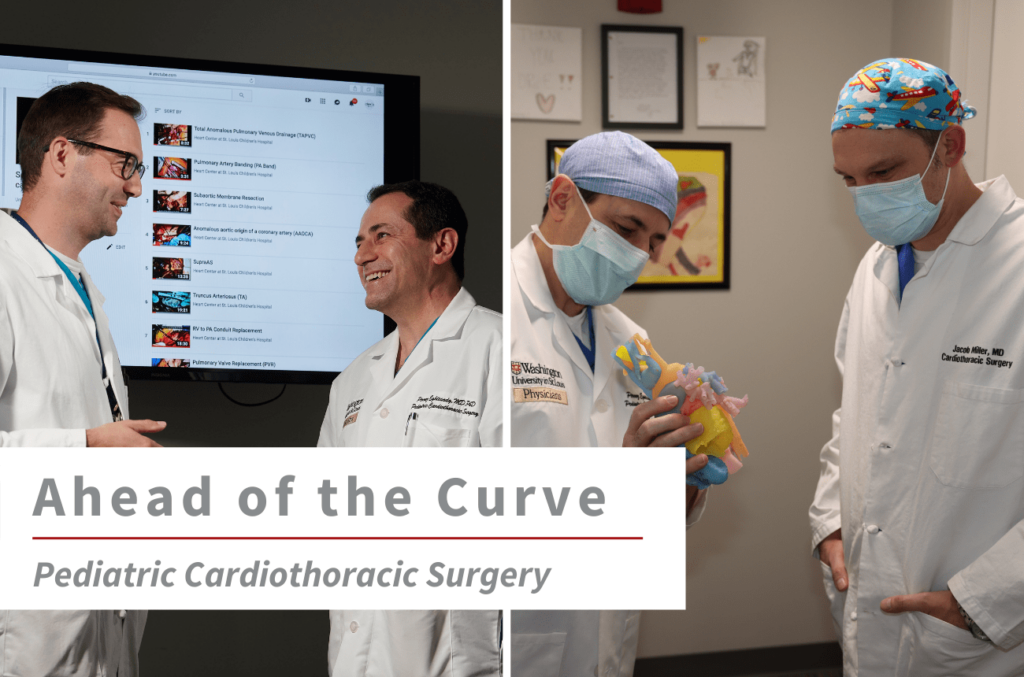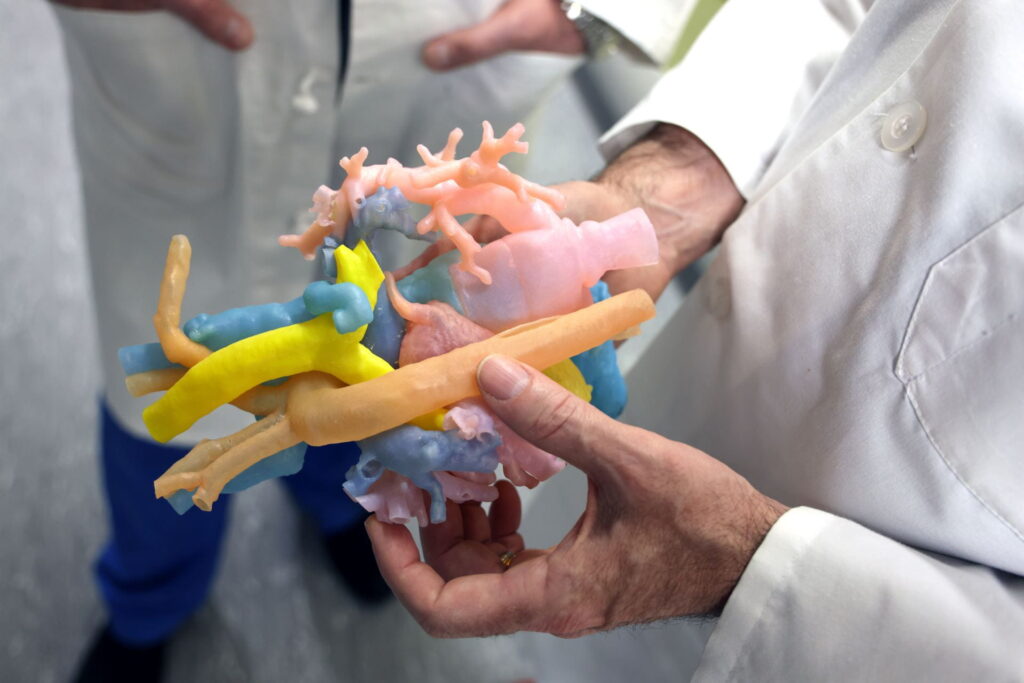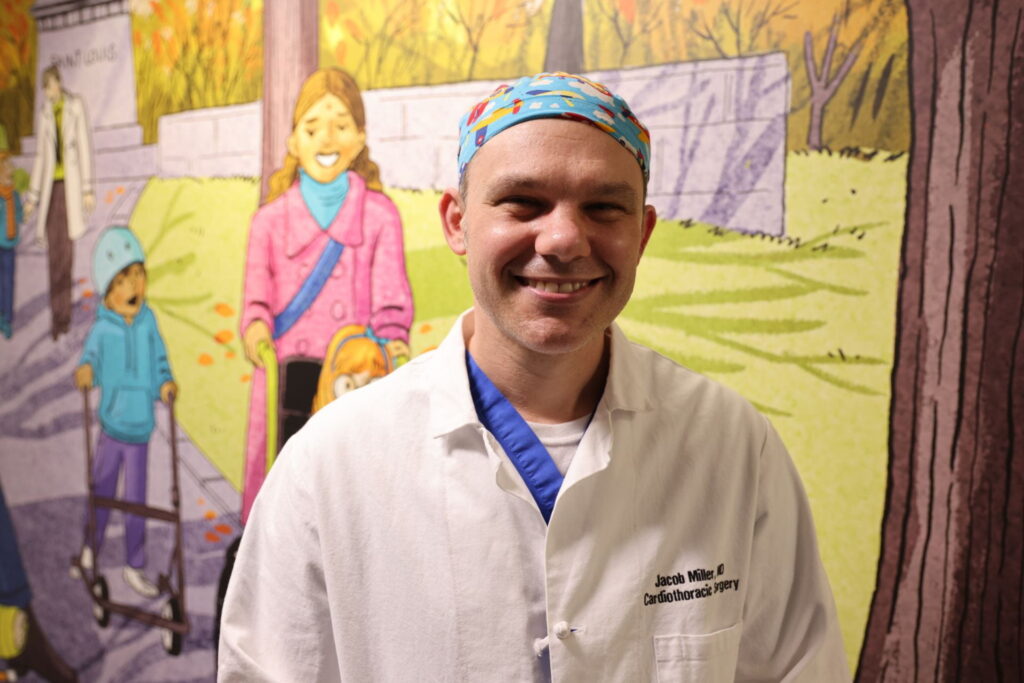Pediatric cardiothoracic surgeons treat children with congenital cardiac disorders. These surgeons treat a range of conditions, from atrial septal defects to complex single ventricle anomalies, neonatal surgery, surgery for congenital heart disease and tracheal reconstruction. The lung transplant program at St. Louis Children’s Hospital is the most active of its kind in the world, attracting patients with cystic fibrosis and other lethal lung diseases. The pediatric heart transplant program also is considered one of the leaders in the United States.
Section of Pediatric Cardiothoracic Surgery | 2020 Annual Report
Patients with congenital heart disease often have rare, complex heart defects. These conditions present challenges for preoperative planning, trainee education and patient counseling. It can be difficult to describe a heart defect to a patient or their family. Cases of rare congenital cardiac problems may not arise during a fellow’s training. Developing innovative methods of treating these conditions requires a simulated environment for surgeons to practice new techniques outside of the operating room.
Surgeons in the Section of Pediatric Cardiothoracic Surgery have found 3D printing to be a transformative technology for preoperative planning and surgical simulation in congenital heart disease. Printing models of the heart allows the surgeon to plan for a procedure, teach trainees in a safe simulated environment and, importantly, educate patients and families.
“It’s quite helpful,” says Section Chief and Cardiothoracic Surgeon-in-Chief at St. Louis Children’s Hospital Pirooz Eghtesady, MD, PhD. “Some of the hearts we’re working with are the size of a strawberry. When you talk to the family and you can show them why this is a complex operation, I think it helps them have a better understanding of what we are doing.”
Eghtesady describes congenital heart surgery as being like rebuilding a house. With 3D-printed hearts, surgeons can move pieces to practice this process, connecting arteries and vessels, rebuilding valves.
Three-dimensional models have also played a role in surgical training. In addition to allowing practice on highly accurate simulators, the 3D models expose trainees to pathological features they may rarely encounter. Future congenital cardiac surgery fellows will have the opportunity to practice an index of rare, complex operations on 3D-printed hearts, preparing them to help a wider spectrum of cardiac patients after training.
“This technology also allows us to think differently and develop new operations for some of themost complex congenital problems,” Eghtesady says. “The cornerstone of our section has been innovation. My mission statement is to make it a better world for families that need our help, one innovation at a time.”
2020 Highlights
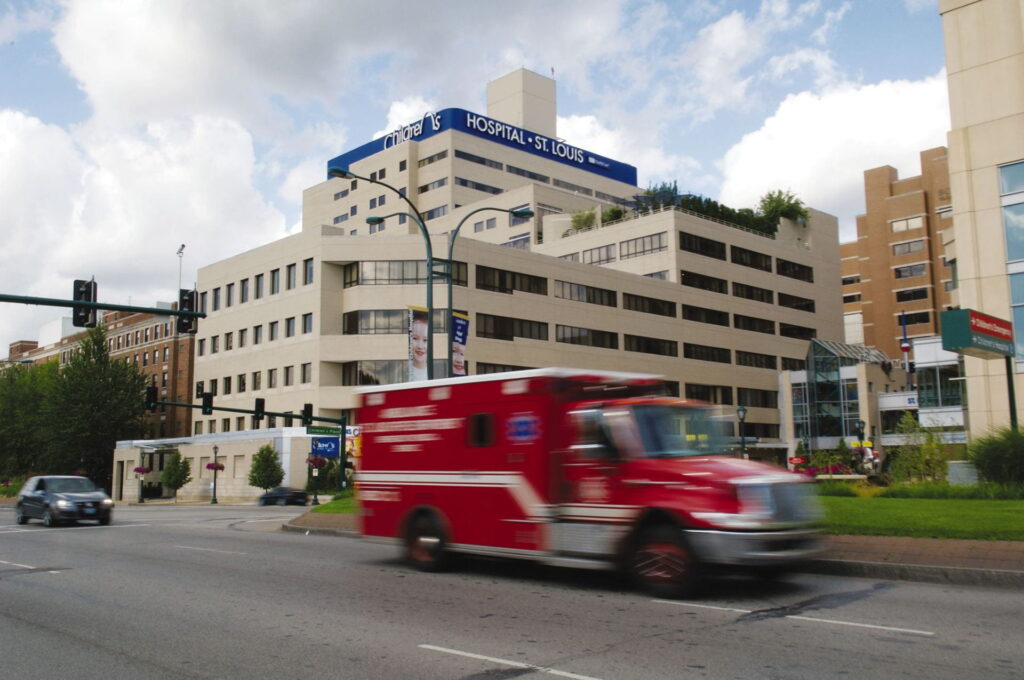
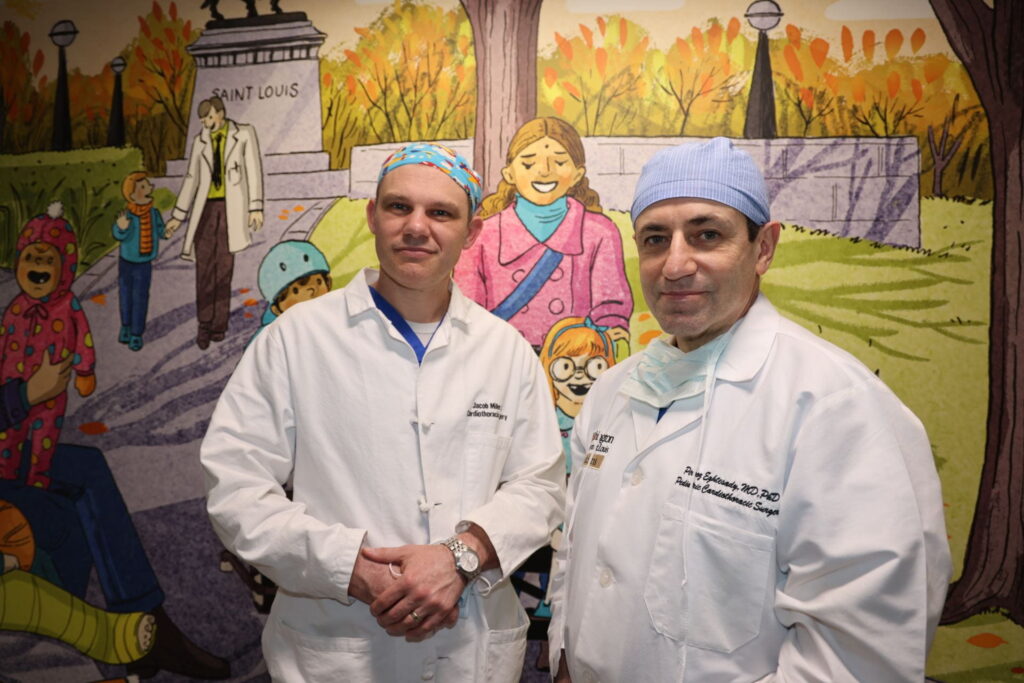
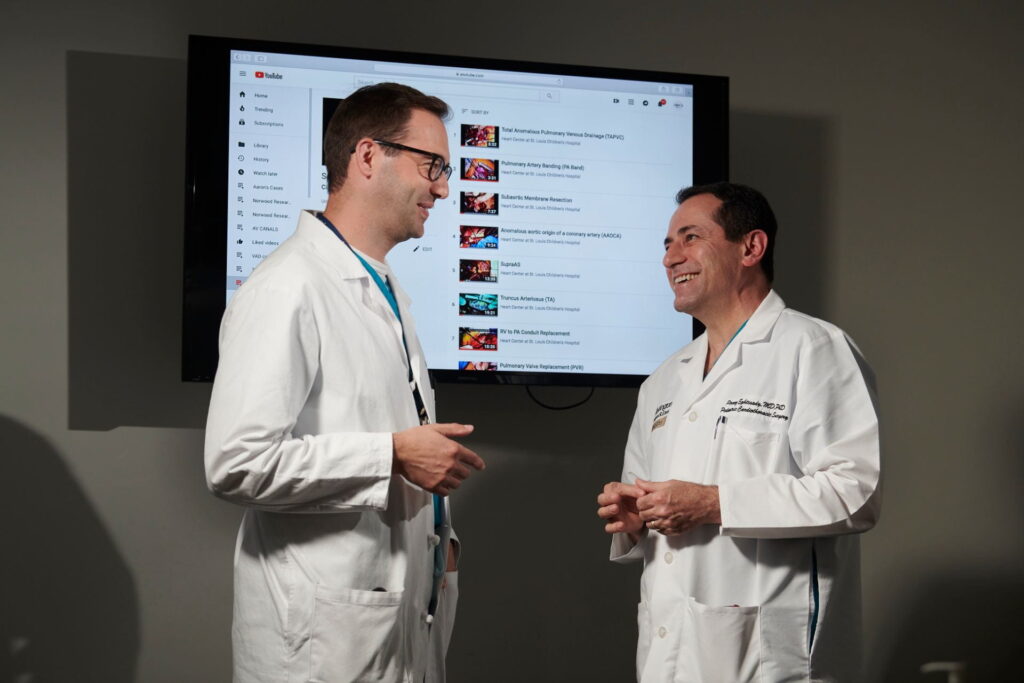
CLINICAL
RESEARCH
EDUCATION
Pediatric cardiothoracic surgeons at St. Louis Children’s Hospital are pioneers in pediatric lung and heart-
lung transplant, as well as the Potts shunt procedure for pulmonary hypertension. For some children with pulmonary hypertension—high blood pressure in the arteries of the lung—who might otherwise require transplantation, surgeons in the Section of Pediatric Cardiothoracic Surgery have found the Potts shunt procedure to be an effective palliative treatment. An upcoming Journal of Thoracic and Cardiovascular Surgery study from Washington University School of Medicine surgeons, cardiologists and pulmonologists found the midterm outcomes of the Potts shunt for pediatric pulmonary hypertension to be similar to those of lung transplant.
Research in the Section of Pediatric Cardiothoracic Surgery is at the forefront of innovation for children with congenital heart and lung conditions. In the past year, researchers from the section, in collaboration with colleagues from across the School of Medicine, have published several peer-reviewed articles covering the breadth of pediatric cardiothoracic surgery. The section is highly active in research studies involving ventricular-assist devices in bridging children to lung transplantation. Researchers recently received an Innovative Project Award from the American Heart Association for research related to the role of maternal gut virome in the development of congenital heart defects.
Before an operation, Section Chief Pirooz Eghtesady, MD, PhD, writes a pre-brief: an account of the patient’s history, details of the upcoming procedure and plans for postoperative management, for the patient care team. The pre-brief has become a didactic tool for the congenital cardiac surgery fellows, who now write the brief, encouraging them to think proactively about the conditions they treat and the way they communicate with a multidisciplinary team. “It is a very active learning technique,” current fellow Jacob Miller, MD, says. “It opens the forum to other members of the team and creates a record of how I would approach a procedure. I have my own record for future surgeries.”
he Section of Pediatric Cardiothoracic Surgery now offers a Congenital Cardiac Surgery Fellowship. The fellowship received accreditation from the American Council of General Medical Education (ACGME), making it one of just 11 such programs in the country. The two-year fellowship trains surgeons in the diagnosis and treatment of patients with congenital heart defects. In recent years, fellowship training has become a requirement for congenital heart surgeons at most hospitals.
Pediatric Cardiothoracic Surgery Section Chief Pirooz Eghtesady, MD, PhD, serves as program director for the fellowship. Eghtesady, the Emerson Chair in Pediatric Cardiothoracic Surgery at St. Louis Children’s Hospital, has over 20 years of experience in congenital cardiac surgery, including more than a decade at Washington University School of Medicine and St. Louis Children’s Hospital. The breadth and depth of the program’s cases—including pediatric heart and lung transplantation, surgical management of children with pulmonary hypertension and use of ventricular assist devices in the management of pediatric patients with heart failure—provides a unique level of training for fellows.
Jacob Miller, MD, is the program’s inaugural fellow. Miller completed both general surgery residency and a thoracic surgery fellowship at the School of Medicine prior to joining the congenital fellowship.
“The program has provided a wide breadth of training in the entire field of pediatric cardiac surgery,” Miller says. “At the same time, Dr. Eghtesady has been an excellent mentor outside of the operating room. The didactic training has allowed me to learn about many more lesion sets and cardiac problems than any one surgeon could treat during fellowship.”
Miller participates in numerous meetings and conferences as part of his training. The adult congenital heart disease meeting, fetal case conference, transplant meetings and weekly conferences provide training in a wide spectrum of clinical cases, as well as experience in multidisciplinary congenital cardiac care.
“I am delighted to have Jacob as our first congenital fellow,” Eghtesady says. “He has certainly already made a name for himself in pediatric surgery. Last year, he was named co- Chair of the Communications and Publications Committee of the American Academy of Pediatrics Section of Cardiology and Cardiac Surgery. This is a first for an individual during their training.”
